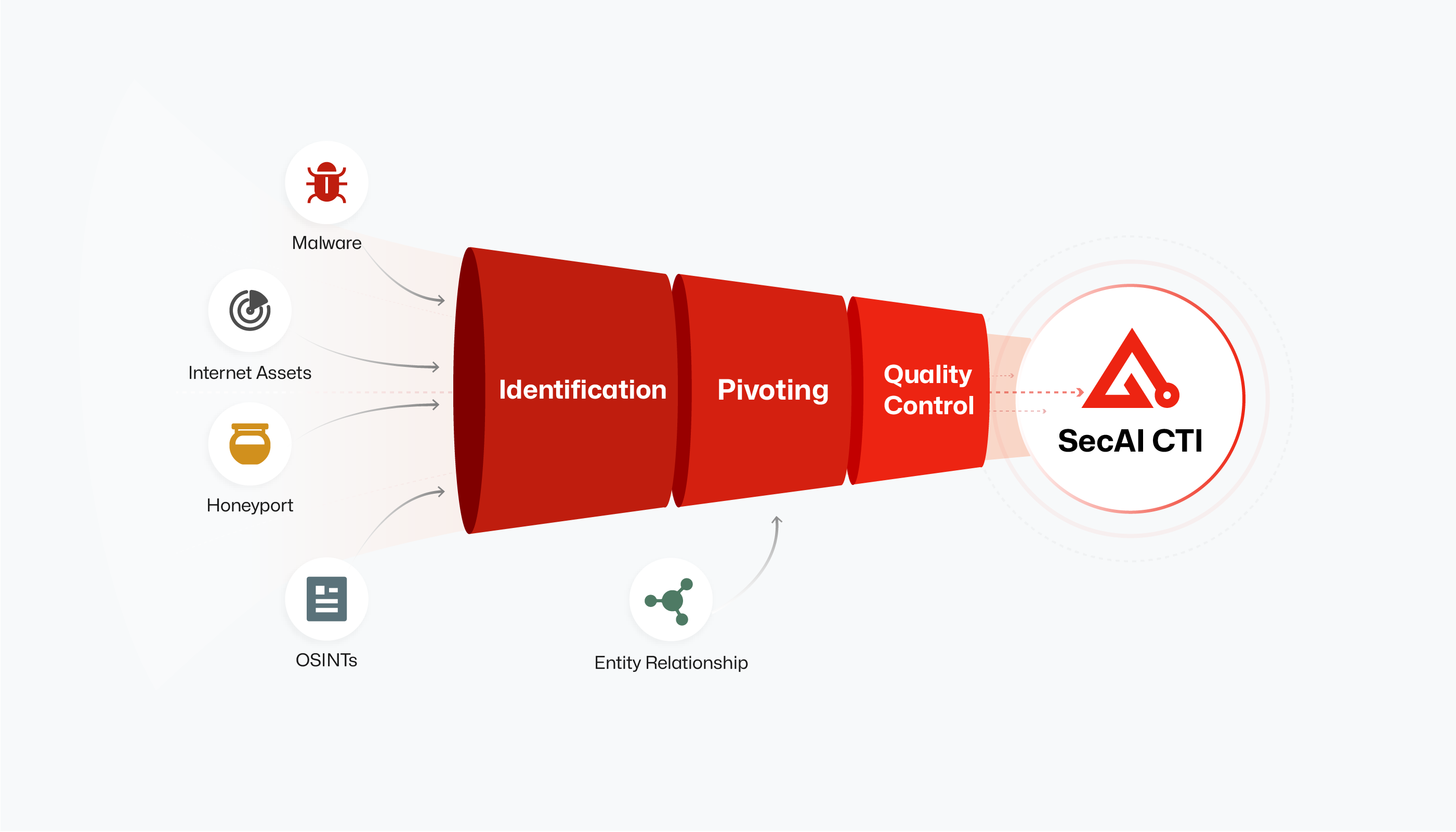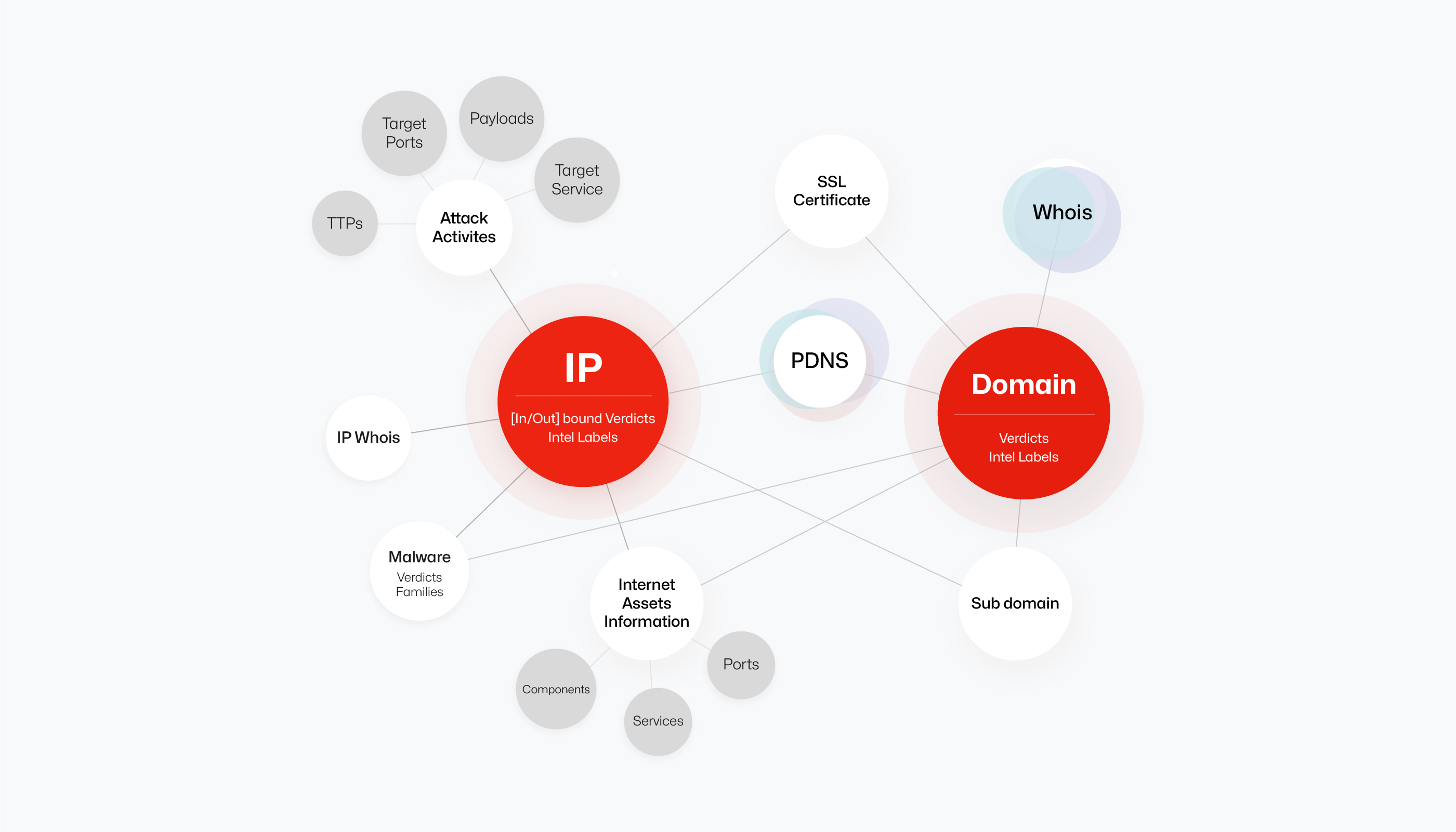Skip to main contentSecAI Investigator provides comprehensive global threat intelligence, with a significant emphasis on the Asia-Pacific (APAC) region. This focus ensures you Gain critical insights into threats prevalent in the region, alongside a comprehensive global perspective.
Data Collection

- Uncover C&C Indicators from Massive Malwares : We analyze over one million new suspicious files daily, extracting critical information like Command and Control (C&C) addresses used by malware.
- Proactive C&C Detection: We actively scan the internet for patterns associated with Command and Control (C&C) servers, enabling us to identify newly active infrastructure and their network addresses, providing early warnings to disrupt potential attacks.
- Honeypot Network for Real-Time Intelligence: Our global network of over 100k+ honeypots passively captures live attack attempts, giving us direct insights into attacker tactics and currently active C&C servers.
- Extensive Domain Data : We collect an extensive inventory of DNS domains, including registrar details, resolved IP addresses, subdomains, and SSL/TLS certificates. This allows you to understand domain infrastructure, identify potentially malicious domains, and see relationships between online assets.
- Global IPv4 Scanning: Our continuous scan of the entire IPv4 space reveals internet-connected devices, their open ports, running services (including VPNs and Tor), geolocation, and more.
- Real-time OSINT Aggregation: Our system continuously monitors over 500+ global security information sources, ensuring you are always updated on the latest threats, vulnerabilities, and attacker tactics.
- Threat Pivoting to Reveal Hidden Connections: We use graph techniques to analyze relationships between data points, uncovering hidden connections and identifying additional potential C&C servers and IP addresses.
Datasets

- IP Reputation: Our IP reputation data provides granular insights into the IP addresses. This includes identifying IPs involved in recent exploit attempts, brute-force attacks, botnet activity, and spam. We also categorize IPs based on their infrastructure characteristics, such as being proxy servers, scanners, VPNs, CDNs, dynamic IPs, backbone networks, IoT devices, cloud WAF entry/exit points, Tor nodes, BT trackers, educational network IPs, gateway exits, mobile base stations, and even identify network mapping tools and search engine crawlers. Crucially, we also capture details about the recent attack methods associated with these IPs.
- IOCs (Indicators of Compromise): Our IOC data provides you with the C&C domains and IP addresses, their associated malware families, related threat actors and campaigns, attribution to APTs(Advanced Persistent Threats) where applicable, and the hash values of the malware involved in communication. This rich context allows for more effective compromise detection and incident response.
- Aggregated Network Information: We offer a consolidated view of fundamental network information for both IP addresses and domains. This includes historical Passive DNS (PDNS) records, historical WHOIS data, internet asset fingerprints, and SSL/TLS certificate details. This historical perspective and asset profiling helps you understand the evolution of network infrastructure and identify potential anomalies.



